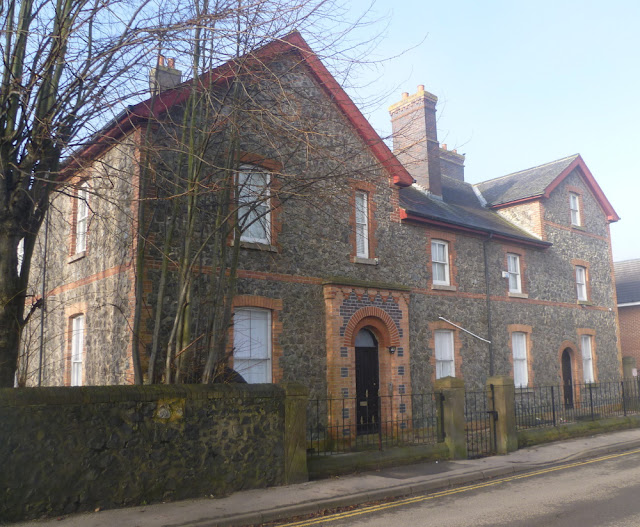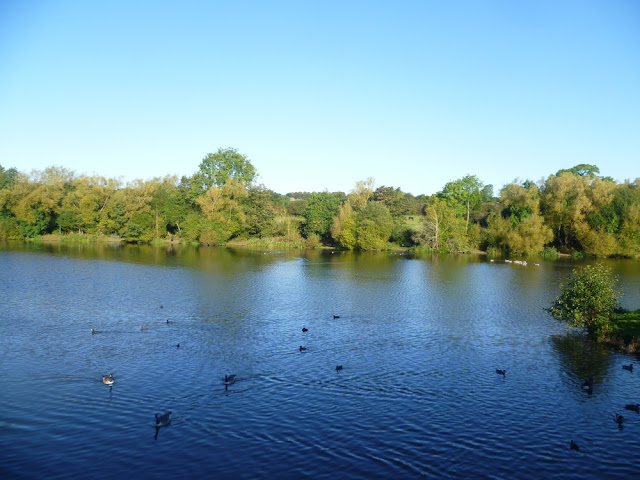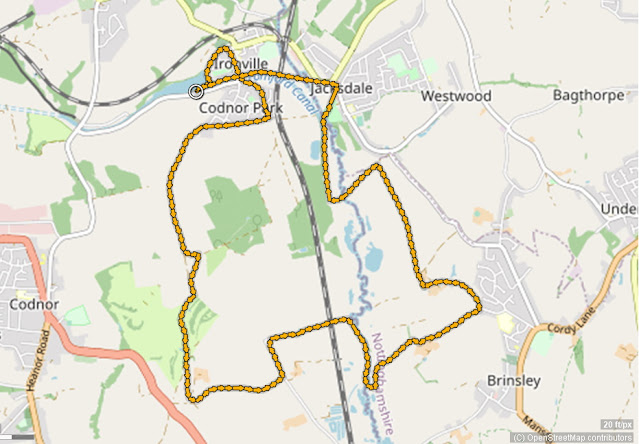Starting at Codnorpark Reservoir, John's well-attended 8.5 mile walk took us through Ironville up to the remains of the 13th century Codnor Castle before dropping down to the Erewash Meadows Nature Reserve and then up to the outskirts of Brinsley. A long descent took us to the Cromford Canal before an interesting excursion to Jacksdale before returning to follow the canal back to the Codnorpark Reservoir.
 |
| Example of house in Ironville built from iron slag |
 |
| Wall of cottage in Forge Row made of clinker and brick |
 |
| Notice board near site of the Codnor Park Ironworks |
 |
| Codnor Castle. These two photos were taken in February 2020 before the castle was fenced off by the Codnor Castle HeritageTrust to protect it |
 |
 |
| Coffee stop at Codnor Castle |
 |
| (Some) men at work on the Nottingham to Sheffield Midland Main Line |
 |
| River Erewash - the border between Derbyshire and Nottinghamshire |
 |
| Cromford Canal |
 |
| Jacksdale Wharf and Basin. Examining the embankment made out of slag blocks manufactured in the ironworks |
 |
| The Portland Tramway connected the Portland Collieries in Kirkby in Ashfield to the Cromford Canal |
wharf in Jacksdale and the Butterley Ironworks over the River Erewash in Codnor Park


